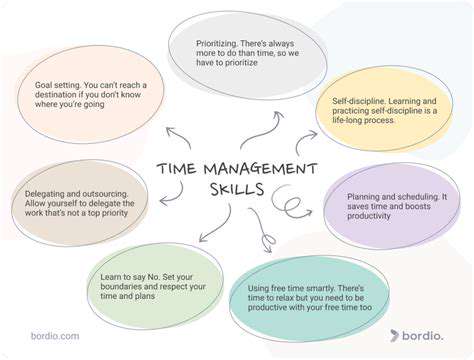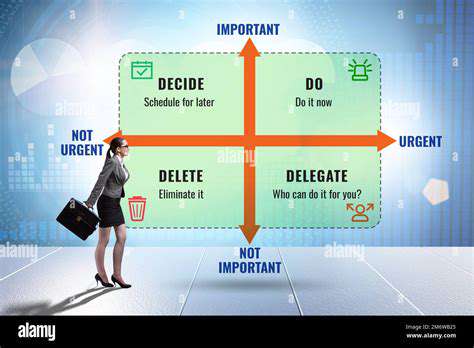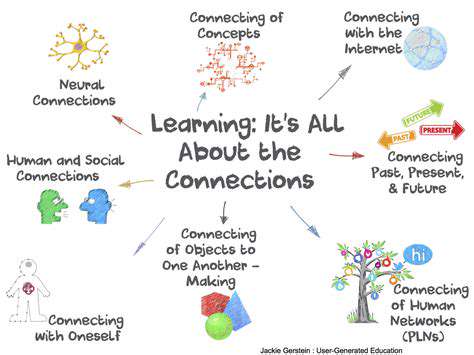How to Start an Online Business [Beginner's Guide]
Researching Market Demand and Trends
Passion alone isn't enough - you need market validation. Start by analyzing industry reports and Google Trends data. Look for patterns: Are certain products gaining steady traction? What problems aren't being adequately solved? Tools like SEMrush can reveal valuable search volume data. The sweet spot exists where your skills intersect with underserved market needs.
Defining Your Ideal Customer Profile
Generic demographics won't cut it. Create a 3D portrait of your perfect customer. Where do they spend their time online? What keeps them up at night? Conduct surveys in relevant Facebook groups or subreddits. Notice the language they use to describe their pain points - this becomes your marketing vocabulary. The more specific your customer avatar, the more targeted (and effective) your messaging becomes.
Evaluating Competition and Differentiation
Study competitors like an undercover agent. Sign up for their email lists, analyze their pricing pages, and document their content strategies. Then identify the white space - maybe they all use formal corporate language when your audience responds to casual, relatable tones. Perhaps their customer service takes 48 hours to respond when you can offer live chat. These gaps become your differentiation roadmap.
Developing a Clear Value Proposition
Your value proposition should pass the elevator test - crystal clear in 30 seconds or less. Try this formula: We help [target audience] achieve [specific outcome] by [unique method] unlike [common alternative]. For example: We help time-strapped entrepreneurs launch profitable online stores using our automated setup system - no web design skills needed. This clarity becomes your north star for all business decisions.
Crafting a Compelling Business Plan

Crafting a Compelling Business Plan: Introduction
Think of your business plan as a living document, not a one-time assignment. The most effective plans evolve with market changes. Your executive summary should hook readers immediately - investors skim hundreds of these, so make yours memorable with concrete numbers and a compelling why. Include a brief market opportunity snapshot showing the dollar value of the problem you're solving.
Key Elements of a Successful Business Plan
Structure your plan like a story: problem (market need), solution (your offering), proof (validation), and roadmap (execution). The operations section often gets neglected - detail exactly how you'll deliver value consistently. For digital businesses, include your tech stack and contingency plans for platform changes (like algorithm updates). Your SWOT analysis should be brutally honest - surface weaknesses early so you can address them proactively.
Financial Projections and Funding
Financials need both ambition and credibility. Show three scenarios: conservative, expected, and aggressive growth. Anchor projections with real data - if claiming 10,000 monthly visitors by year two, document how you'll achieve this (e.g., $X in ads driving Y% conversion). For funding requests, specify exactly how capital will be deployed, with measurable milestones for accountability. Investors want to see their money has a clear path to ROI.
Building Your Online Presence: Website and Branding
Choosing a Domain Name and Hosting
Your domain is digital real estate - choose wisely. Namecheap and Google Domains offer affordable options with solid DNS management. For hosting, don't cheap out. A $3/month shared host might save money now but cost you in slow load times and security vulnerabilities later. Managed WordPress hosting or cloud solutions like Vultr offer better performance for serious businesses.
Designing a User-Friendly Website
Visitors judge credibility in milliseconds. Use clear visual hierarchy - important elements above the fold, with obvious calls-to-action. Implement breadcrumb navigation for complex sites. Test your site on actual mobile devices, not just emulators. Reduce cognitive load by limiting choices - too many options paralyze decision-making. Heatmap tools like Hotjar reveal how visitors actually interact with your design.
Developing a Strong Brand Identity
Your brand is the emotional aftertaste you leave with customers. Develop a brand style guide early - fonts, color hex codes, image filters, and tone of voice. For B2B, maybe you're the reliable expert using blues and professional headshots. For Gen Z consumers, perhaps vibrant colors and user-generated content. Consistency across touchpoints builds recognition - your Instagram should feel like an extension of your website.
Content Creation Strategy
Map content to your customer's journey. Top-of-funnel pieces address broad questions (blog posts), middle-of-funnel compares solutions (case studies), bottom-of-funnel closes deals (demos). Repurpose content aggressively - a podcast becomes a blog transcript becomes social snippets. Quality trumps frequency - one comprehensive guide outperforms ten shallow posts. Use tools like Clearscope to optimize for search intent.
Optimizing for Search Engines (SEO)
Modern SEO balances technical and human factors. Fix crawl errors via Google Search Console. Structure content with semantic HTML (H2/H3 tags properly nested). Build topical authority by interlinking related content. But don't keyword stuff - write for people first. E-A-T matters (Expertise, Authoritativeness, Trustworthiness) - showcase credentials and cite reputable sources.
Building a Social Media Presence
Double down on 1-2 platforms where your audience lives, rather than spreading thin. LinkedIn for B2B? Pinterest for visual products? Study platform-specific best practices - TikTok favors raw authenticity while LinkedIn rewards polished insights. Use social listening tools to join relevant conversations. And remember: social media is for engagement, not broadcasting - respond to every comment to boost algorithm visibility.
Managing Your Online Reputation
Set up Google Alerts for your brand name. Address negative reviews with solutions, not defensiveness (We'd love to make this right - please DM us). Showcase positive testimonials prominently. For crisis management, have templated responses ready. Proactively build credibility through guest posts on industry sites and partnerships with respected influencers in your niche.












